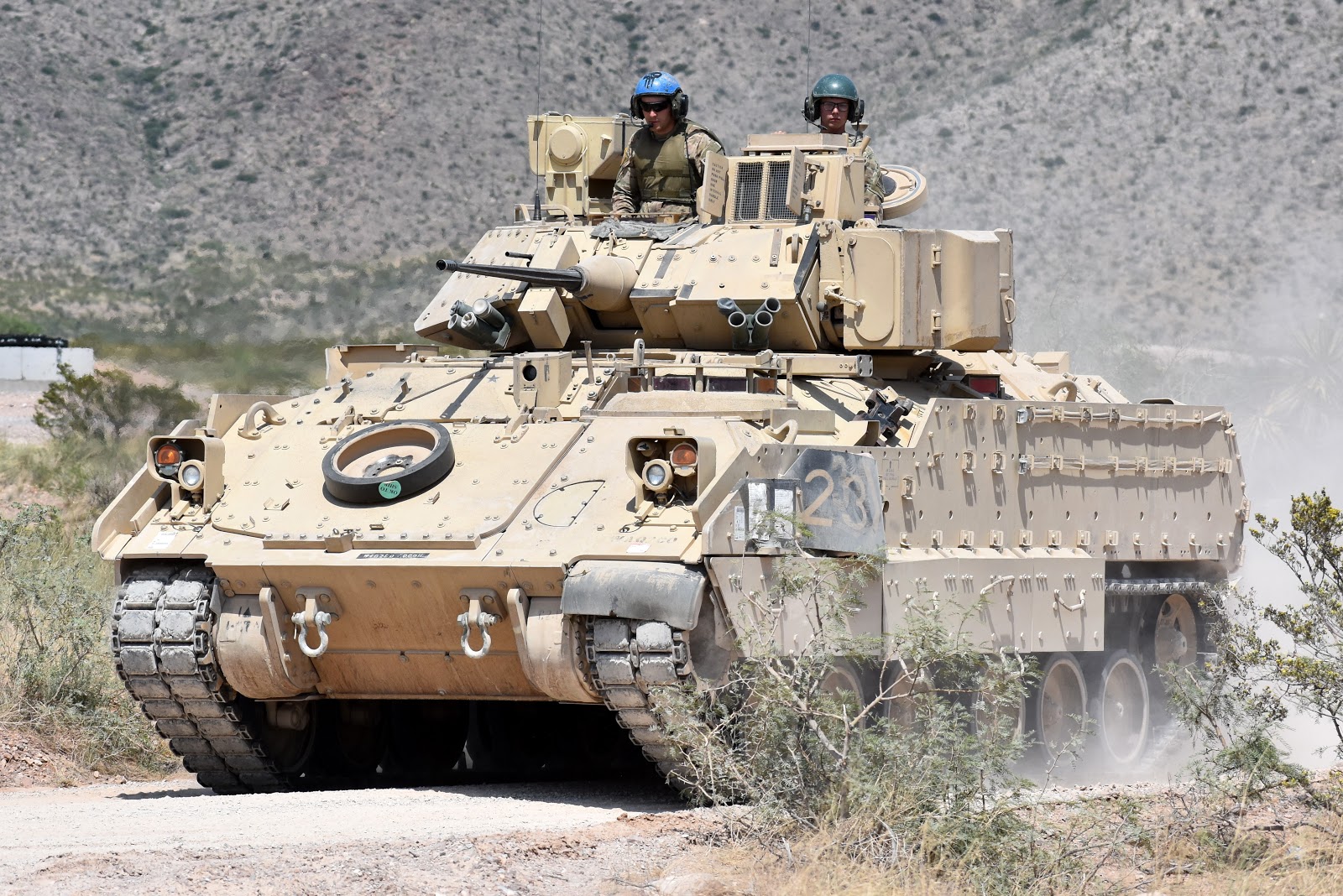The Bradley Gun has earned its place in the annals of military history, representing a significant leap in armored vehicle technology. Initially designed to serve as a personnel carrier and fire support vehicle for the United States Army, the Bradley Gun has proven its worth in various conflicts, showcasing versatility and firepower. This article delves into the intricacies of the Bradley Gun, exploring its features, historical significance, and roles in modern warfare.
With the evolution of combat tactics and the increasing need for efficient armored vehicles, the Bradley Gun has adapted to meet the challenges of contemporary warfare. Its design incorporates advanced technology, allowing it to engage threats while ensuring the safety of its crew and infantry. As we explore the Bradley Gun’s capabilities, we will uncover how it has transformed the battlefield landscape.
From its inception to its current iterations, the Bradley Gun has been a focal point of military strategy and innovation. Understanding its development and operational roles provides invaluable insights into not only the vehicle itself but also the broader context of military advancements in the 21st century. Join us as we explore the multifaceted world of the Bradley Gun.
What is the History of the Bradley Gun?
The Bradley Gun was introduced in the late 1970s, designed to fulfill the U.S. Army's need for a modern armored personnel carrier. It was named after General Omar Bradley, a prominent World War II commander. The vehicle was initially conceived to replace the aging M113 armored personnel carrier and provide enhanced capabilities on the battlefield. The Bradley Gun made its combat debut during the Gulf War in 1991, where it showcased its effectiveness against enemy forces.
What Are the Key Features of the Bradley Gun?
The Bradley Gun boasts an array of features that make it a formidable presence on the battlefield:
- Armored Protection: The vehicle is designed with advanced armor to protect against small arms fire and shrapnel.
- Firepower: Equipped with a 25mm M242 Bushmaster chain gun and TOW missile launchers, the Bradley Gun can engage both soft and armored targets effectively.
- Mobility: The vehicle's powerful engine allows for quick maneuvers across various terrains, providing tactical advantages in combat.
- Versatility: The Bradley Gun can transport infantry troops and provide fire support, making it suitable for a wide range of military operations.
How Has the Bradley Gun Evolved Over Time?
As military needs have changed, so too has the design and functionality of the Bradley Gun. Several upgrades and modifications have been made to enhance its combat effectiveness. These include improvements in armor technology, weapon systems, and electronic warfare capabilities. The latest versions of the Bradley Gun, such as the M2A3 and M2A4, feature enhanced sensors and communication systems, allowing for greater situational awareness on the battlefield.
What Role Does the Bradley Gun Play in Modern Warfare?
The Bradley Gun plays a critical role in modern warfare as a multi-functional platform. It is primarily used for transporting troops into battle while providing cover fire. Its ability to engage both ground and aerial targets makes it an invaluable asset in combined arms operations. The Bradley Gun has proven effective in various conflicts, including Iraq and Afghanistan, where its adaptability to urban and rugged environments has been critical.
Are There Any Notable Combat Experiences of the Bradley Gun?
Throughout its service, the Bradley Gun has participated in numerous notable combat operations. During the Gulf War, it was instrumental in the rapid advance of Coalition forces, demonstrating its capabilities against Iraqi armored units. In more recent conflicts, the Bradley Gun has faced challenges from improvised explosive devices (IEDs) and asymmetric warfare tactics. Its continuous evolution has allowed it to remain relevant and effective in diverse combat scenarios.
What Are the Advantages of Using the Bradley Gun?
The Bradley Gun offers several advantages that contribute to its effectiveness in military operations:
- Combined Arms Capability: It can work in conjunction with other military assets, enhancing overall combat effectiveness.
- Enhanced Survivability: The advanced armor and defensive systems help protect the crew and infantry from various threats.
- Rapid Deployment: Its mobility allows for quick repositioning on the battlefield, providing tactical advantages.
- Fire Support: The vehicle's weapon systems enable it to engage and neutralize enemy threats effectively.
What Future Developments Are Expected for the Bradley Gun?
The future of the Bradley Gun involves ongoing modernization efforts to keep pace with technological advancements in warfare. The U.S. Army is exploring options for further upgrades, including enhanced lethality, improved sensor systems, and integration with unmanned systems. These developments aim to ensure that the Bradley Gun remains a crucial asset in the evolving landscape of modern combat.
Conclusion: Why the Bradley Gun Remains Relevant?
The Bradley Gun's rich history, combined with its adaptability and ongoing modernization, ensures its relevance in contemporary military operations. As combat scenarios become increasingly complex, the Bradley Gun continues to demonstrate its effectiveness as a multi-role combat vehicle. Its legacy as a symbol of modern armored warfare endures, making it a cornerstone of the U.S. Army's tactical arsenal.
You Might Also Like
Unveiling The Life And Achievements Of Nathan Thomas StewartUnraveling The Intriguing Life Of Fleece Johnson
Discovering The Enigmatic World Of Luna Okko
Bharat Kpkuang: A Rising Star In The World Of Art
Humor In Controversy: The Complex World Of Funny Racist Jokes
Article Recommendations
- Joseph And Jacob Fiennes Dynamic Duo Of The Silver Screen
- Unleash The Allure Of Mydesi Explore Our Captivating Web Series Today
- Discover The Ultimate Guide To Mydesi Website


